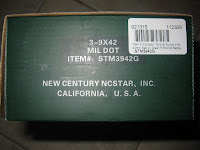In the past I have usually reloaded my rifle ammunition on a single stage press. For no particular reason I wanted to reload some rifle rounds on the Dillon. I started with 30-06 as I had the dies and I could use the shellplate, buttons, etc from other rounds that I already reloaded.
I set the Dillon up with the 30-06 dies and filled the powder measure up with some IMR-4895. This load was going to be for the Garand so it will not be too hot. About 45 grains of 4895 behind a 168gr SMK. I was trying to get the powder measure dialed in but I kept on noticing that when I brought the handle up I still had grains of powder dropping out. After about ten repetitions of handle I had a noticeable amount of powder sprinkled around the shellplate and surrounding area.
Long grain extruded powders are known to have a bit of an issue metering through the Dillon but this seemed to be problem to me. I decided to throw about 30 rounds and I would weigh each one on two different scales to see what kind of a shot to shot difference I was getting. I measured each round twice and then added the powder back into the powder measure.
30 measurements everything stock
Min: 44.4 Max 44.9 Range: 0.5 Mean: 44.62 Std Dev: 0.16
I then tried to add a powder baffle from UniqueTek. This baffle is supposed to provide an uniform flow of powder even as the level of powder in the measure changes. Since I was pouring the powder back in after every measure I did not really test the baffle for what it was designed for.
30 measurements with powder baffle
Min: 44.1 Max 45.4 Range: 1.3 Mean: 44.84 Std Dev: 0.33That did not work out very well. A 1.3 grain difference and the standard deviation doubled.
I took the baffle out and while I had the powder measure apart I pulled out my dremel and some went to work. I started with a scotch brite pad bit and finished up with a polishing pad and some jewelers rouge.
I polished up the entire funnel, the mouth, and all parts of the powder bar inside and out. I did not remove any metal but I polished it up and made it smooth. You can see the difference between an untouched measure and an "improved" measure.
Now I put it back together without the baffle and measured another 30 rounds. This time I also decided to slow down the stroke I was using. When reloading pistol ammunition you can crank out some rounds but when reloading rifle and using extruded powders you should slow down a bit. I chose a 4 count from the time the powder bar starts to move until the the powder bar stops moving. Four was an arbitrary number but it seemed to be about right and I needed to make each stroke as repeatable as possible. It is not like I just made some numbers up called my self a climate scientist and made a movie about it.
30 measurements with polished funnel and 4 count stroke.
Min: 44.0 Max 44.3 Range: 0.3 Mean: 44.15 Std Dev: 0.08Now that is what I am talking about! 30 rounds and the largest difference was only 0.3 grains. I think that will be accurate enough for me. I just need to hold the rifle steady now.
Just to ease my curiosity I put the powder baffle back in and tried again.
30 measurements with polished funnel, powder baffle, and 4 count stroke.
Min: 44.3 Max 44.8 Range: 0.5 Mean: 44.595 Std Dev: 0.13Again the standard deviation increased with the baffle installed. Granted, I did not test with a varying amount of powder in the measure but to have this much of an impact on the measurement at this stage makes me want to leave it out.
So what does all this mean. When reloading bottle neck rifle cases on a Dillon with extruded powders you should polish up your funnel and powder bar and sloooow down with handle especially on the down stroke.










